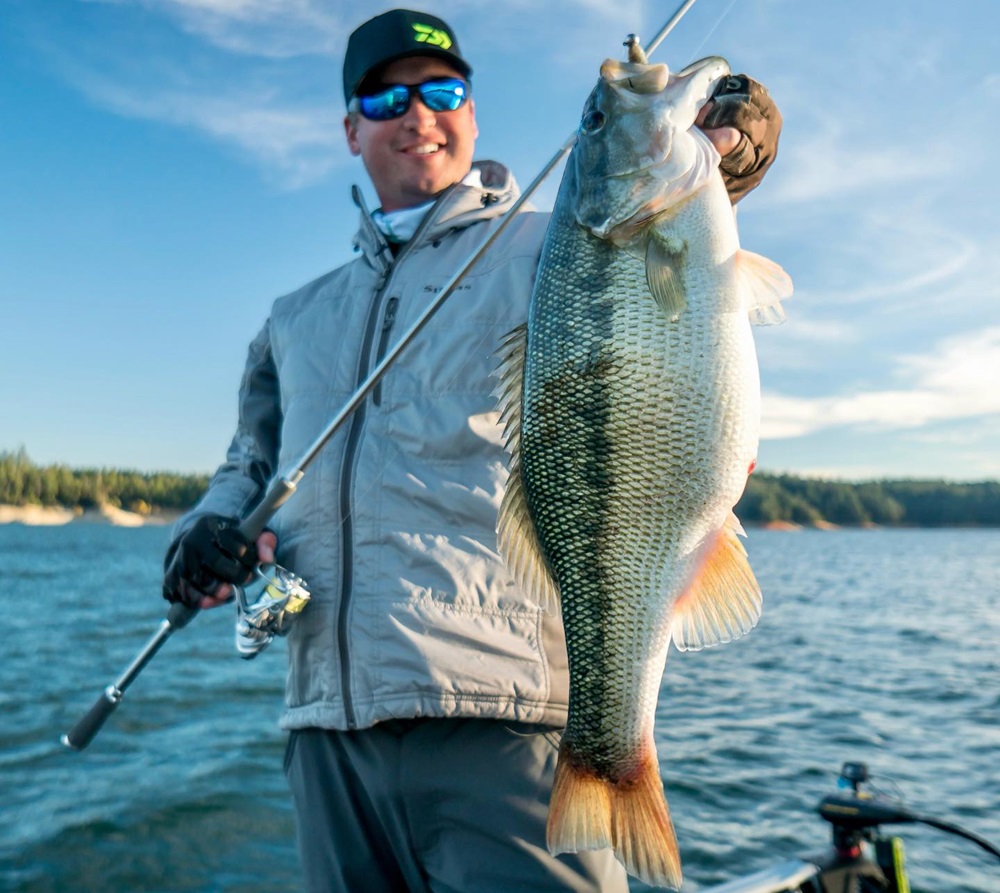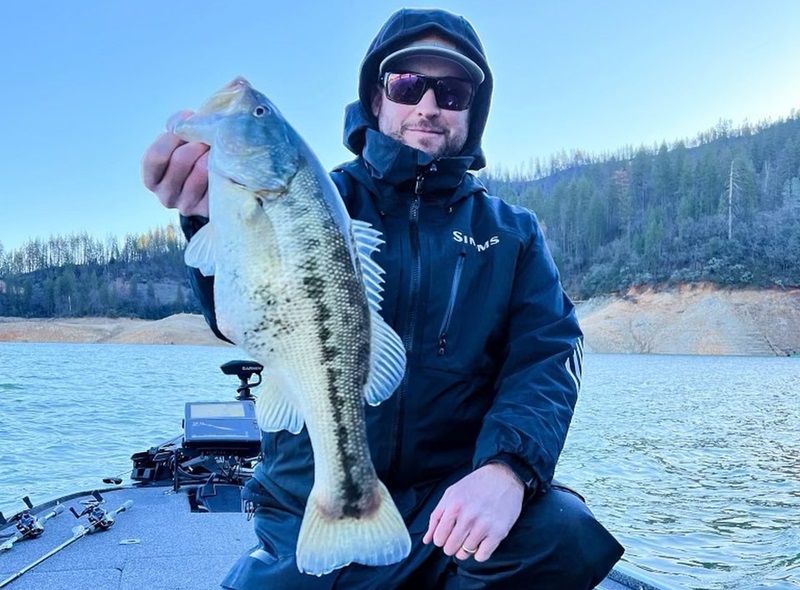
Pro angler Cody Meyer has caught plenty of bass in his long career and knows how to catch all species, but he's known for one in particular. Meyer is a spotted bass guru and even briefly held the world record. It's by far his favorite bass species to target and even though he's moved away to Idaho, you might see him fishing California's Shasta and Oroville lakes this winter. It's what he does every offseason and he'll be out there for fun trips and team events because he loves it so much.
This year, he's excited because the lakes are fishing well and he has some new tricks and ways to target them. It's got him itching to get back there and he shared how he will be approaching the lakes this winter.
 Shasta and Oroville are on the upswing
Shasta and Oroville are on the upswing
Meyer keeps close tabs on two of his favorite lakes and says the fishing should be great this winter based on recent tournament results.
"They are both fishing extremely well, and it's taking over 11 pounds to get the last check at some of the events, where usually it's around 9 pounds," he said. "That may not seem like a lot, but it's showing the fishing is getting better, and I think a lot of that is due to LiveScope."
Forward-facing sonar has undoubtedly changed bass fishing and Meyer said it's tailor-made for fishing for spotted bass on Shasta and Oroville, especially during the winter months.
"The water levels on those two lakes go up and down with rains and snow melt, but the good thing is the bass always suspend out there," he said. "No matter what the weather does, even if the water temps drop 20 degrees in a few days, you can still see and catch those suspended fish."
The two lakes have slightly different forage bases, but Meyer approaches them similarly. "Oroville is the pond smelt and crawfish and Shasta is shad, trout, and crawfish," he said. "On both lakes, the bulk of fish will be suspended chasing bait in 20 feet or much deeper and one of the best ways to catch them is with hover-strolling or mid-strolling. It's the perfect scenario and the clear water makes it the best way to target fish out there, which is much easier than just dragging baits around like we did for years."
 Meyer's mid-strolling approach
Meyer's mid-strolling approach
To target these suspended fish, Meyer says it's hard to beat the mid-strolling technique, shaking a baitfish-imitating plastic on a jighead through the water column for these suspended bass.
Meyer likes to use a Yamamoto Scope Shad or Shad Shape worm in a baitfish color like electric shad or pro blue and fishes them on an Owner Range Roller jighead, starting at 1/8-ounce and adjusting from there.
"I typically like the lighter heads, either a 1/8 or even a 1/16-ounce, so you get that nice slow fall," he said. "A heavier head will fall too quickly past the fish and the only time I'll use a 3/16 or ¼-ounce is if the fish are closer to the bottom and it's pretty deep water."
Meyer is also particular about the rod he uses, going with two different rods depending on the situation. Both are in the Daiwa Tatula Elite lineup. One is a 7-foot medium-light that he designed for drop-shot fishing and the other is a 7-foot, 6-inch medium-light hair jig rod designed by Chris Johnston.
"Neither of those rods was designed for mid-strolling, but they are both perfect for the technique," he said. "I like the 7-foot rod most of the time and the shorter rod allows you to shake the bait and fish it almost like a jerkbait with your rod tip down towards the water. The longer rod is great for shallower water and you can keep your rod up and keep the bait higher in the water column."
He goes with the Daiwa Tatula LT MQ for a reel and spools it with a 10-pound J-Braid Grand in chartreuse with a leader of 7-pound J-Fluoro fluorocarbon.
"That's my all-around spinning rod setup that works for this technique and so many others," he said. "The reel is smooth and works flawlessly even in the coldest weather. I like the bright braid just for seeing those light ticks when one bites the bait and the thin diameter gets the bait down quickly into what you see on your screen, which is so important."
As he has done every year since moving away, Meyer is coming back to California this winter to chase spotted bass. It's become a new annual tradition for him and this year, he'll take his years of experience and some new tricks to lakes Shasta and Oroville.


 Advertising
Advertising